Viking Runes: Understanding the History and Symbolism Behind the Runic Alphabet
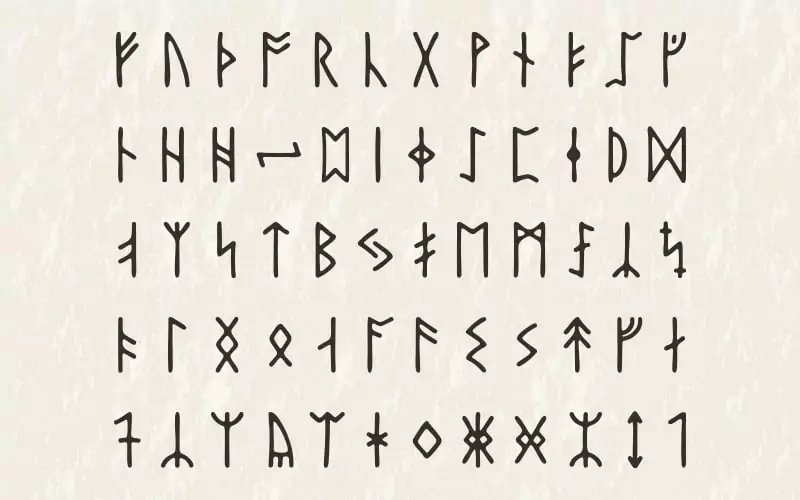
While the Latin alphabet – the alphabet used in English – is the most commonly used set of letter symbols, it’s far from the only alphabet out there. The runic alphabet was used for thousands of years and was the basis for many Germanic languages, including Viking runes.
But beyond just being a system for writing letters, these runes are believed to hold an inherent power within them. Modern practitioners of magic and divination use Norse and Viking runes during spell casting. But even if you enjoy magic in a strictly fantasy storytelling setting, Viking runes can still help set the scene in a novel or movie.
First, we will explore the Viking runes from the Viking age, and then we’ll delve into their contemporary usage across the globe.
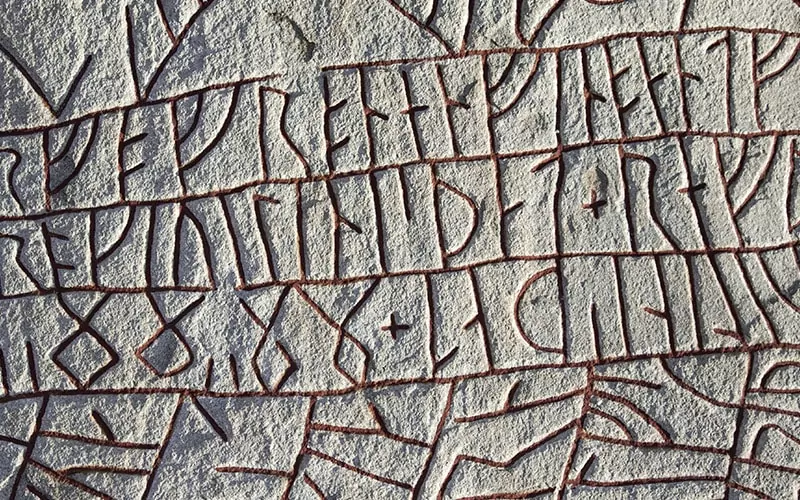
The History of Viking Runes
The Latin alphabet’s earliest known inscription dates back to the 7th century B.C. and was discovered on a cloak pin. In contrast, the runic alphabet is much younger, with its first inscriptions dating as far back as 150 A.D. It was widely adopted by various Germanic communities during the 1st and 2nd centuries A.D.
Today, many Germanic languages have switched to the Latin alphabet, leaving behind the runic symbols. As Christianity spread worldwide thanks to European conquest, languages shifted to the same alphabet as the Bible. Of course, the first iterations of the Bible were written in Hebrew, but the Latin translations were seen as the authority for centuries.
In fact, until the Reforms of the Second Vatican Council, Catholic Mass was to be held in Latin, not the common tongue of the congregation. That didn’t change until the 20th century.
So these previously runic languages shifted to the Latin alphabet, but in the period between 700AD and 1100AD, they still used the runic alphabet for special occasions and decorative use.

But the runic alphabet is not a monolith. There are three primary runic alphabets: Scandinavian Elder Futhark, Younger Futhark, and Anglo-Saxon Futhorc.
The Anglo-Saxon spelling shifted to account for the different pronunciation in Old English.
Each alphabet has different uses. Younger Futhark was widely known and disseminated. We’ve seen its use across Scandinavia and various Viking settlements. Elder Futhark, on the other hand, was secretive and elite. For reference, over 3,000 inscriptions of Younger Futhark have been found. Only around 350 have been found of Elder Futhark.
However, artifacts containing a blend of both translations have also been found.
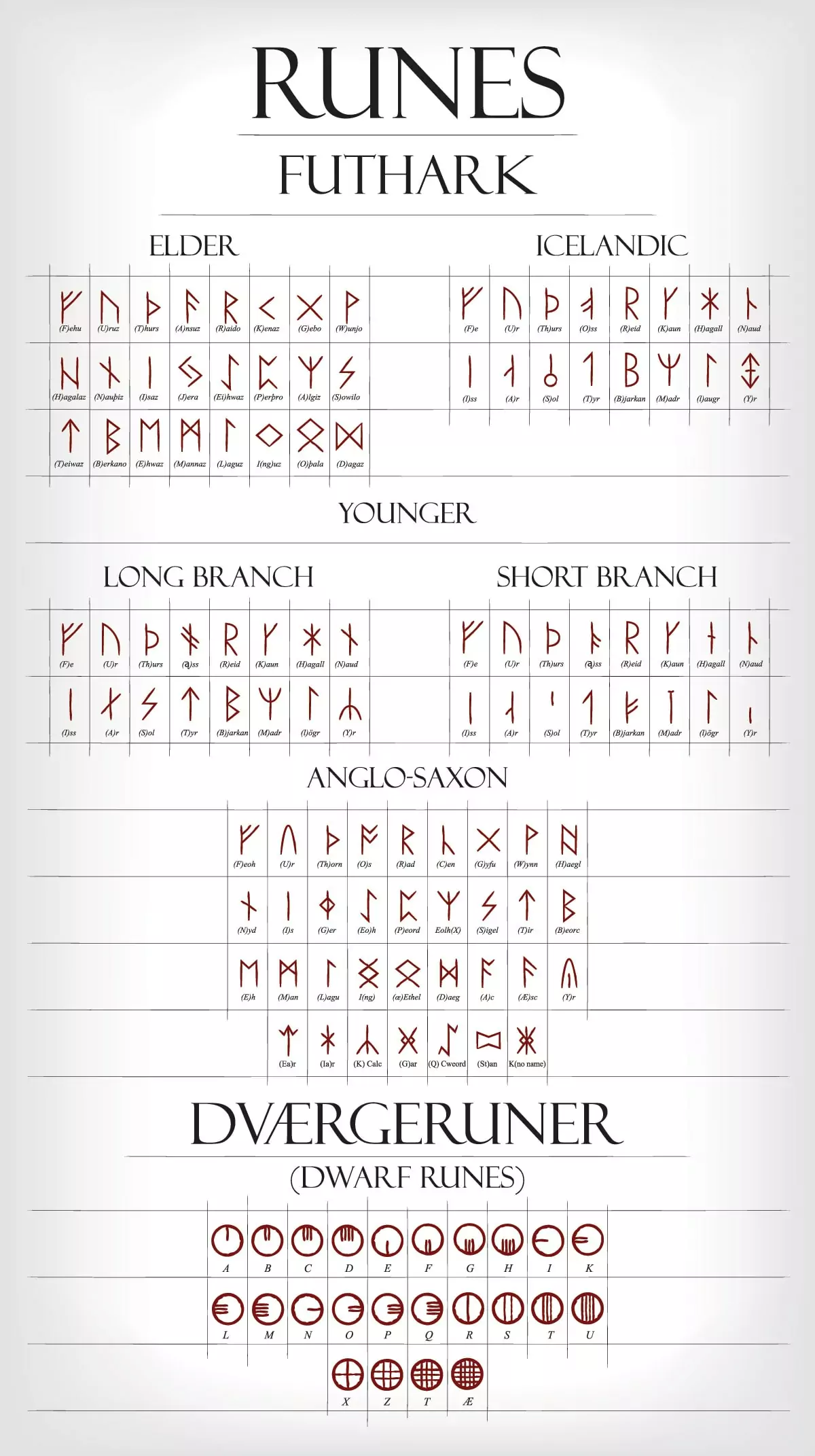
The Etymology of the Word “Runes”
So where did the word “rune” come from? The root of the word is the Germain “run,” meaning “whisper” or “secret.” If you look at the Old Irish Gaelic translation of the “run” root, you get “secret,” “mystery,” or “intention.” Old English and Welsh have similar translations as well.
In various Baltic languages, “run” means “speech.” Even more interestingly, “runoti” means “to speak” or “to cut with a knife” in Lithuanian. This dual meaning certainly conjures to mind the image of someone with biting wit and a sharp tongue.
This root understanding of the world helps explain why people find the alphabet so alluring. It’s as if the word itself possesses power beyond its face value meaning. And the continuous reference to the word “secret” in its translation makes it even more intriguing and compelling.
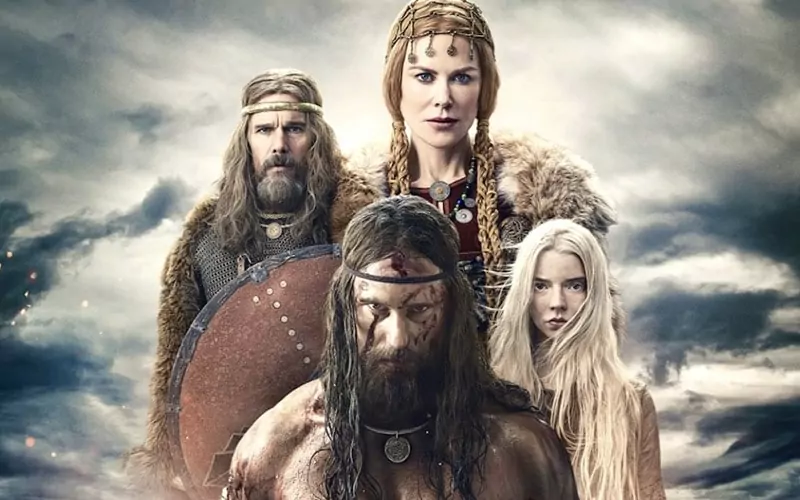
Runes in Pop Culture
The fascination with runes goes beyond people who practice witchcraft. Lovers of fantasy enjoy runes as well.
J.R.R. Tolkien, author of the infamous Lord of the Rings series, took inspiration from the runic alphabet when crafting his complicated language system.
Norse mythology and the famous rune of Mjolnir play a big part in the Marvel Cinematic Universe with Thor as one of the Avengers.
And shows like Vikings and Vikings: Valhalla as well as 2022’s Northman concentrate on the Nordic culture and Viking creed.
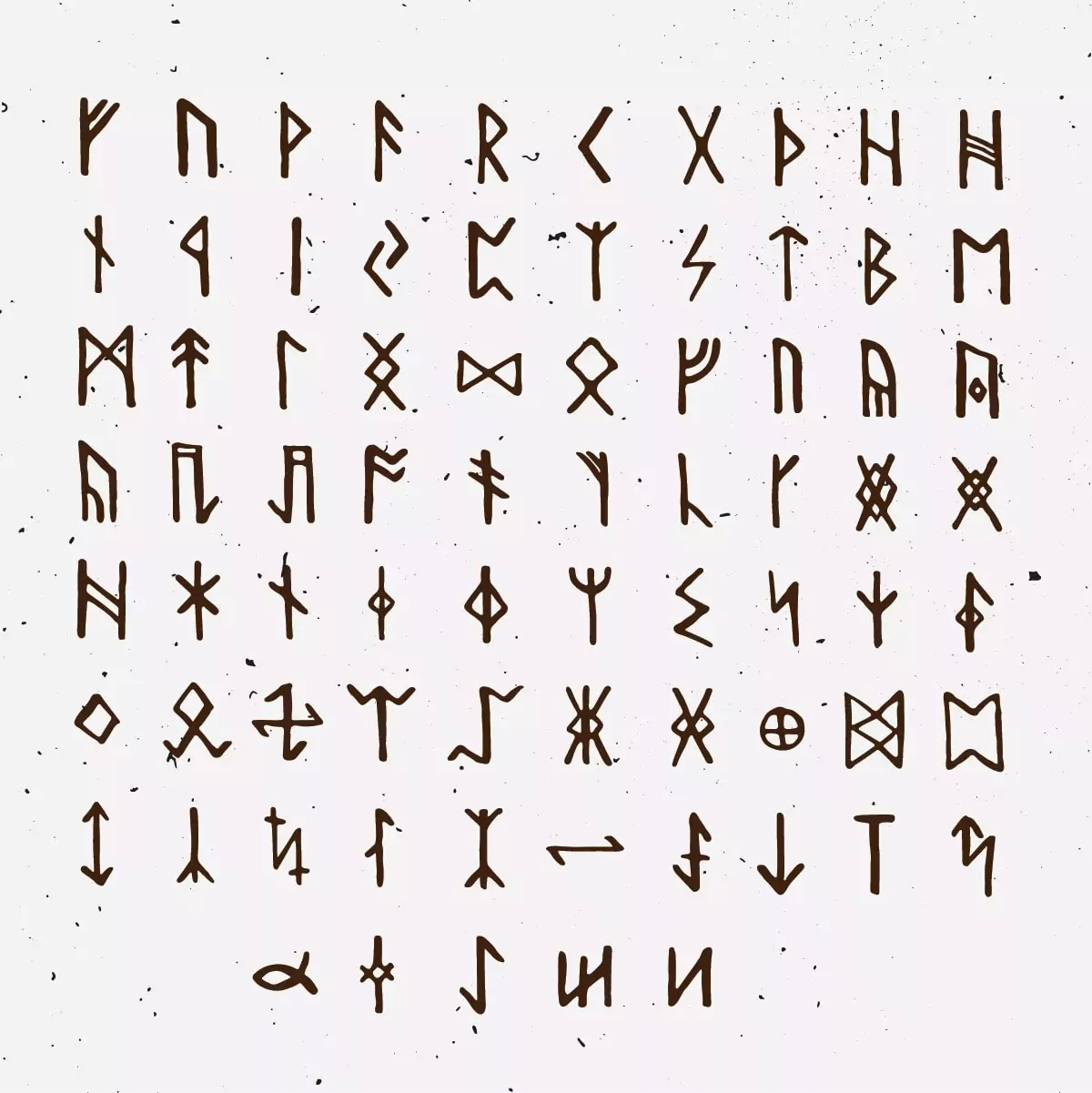
The Power of Norse Runes and Norse Symbols in Viking Lore
So it’s just an alphabet. Why do we associate individual runes as having power on their own?
For that, we turn to Norse lore and the nordic symbols.
According to legend, the world-tree – Yggdrasil – possesses the nine worlds and grows from the Well of Urd. Three female entities, known as Norns, reside within the well, spending their days carving the destiny of every living being into the ancient bark of this ever living tree.
The king of the Norse Gods, Odin, longed to learn the truth of these runes and access their secrets. In order to do so, he impaled himself with his very own spear and hung from the Yggdrasil tree for 9 days and nights.
He decided to take such drastic action because he believed understanding the deep meaning of the runes would bring unto him untold wisdom.
On the ninth night of his challenge, he discovered the runes. He reaches for them and in doing so, gains all of the knowledge of their power in addition to regaining his life. Odin now has access to all of their mysteries, secrets, powers, and magic. This acquisition makes him even more powerful than before.
Learning this story helps us understand why Vikings believed these runes were so powerful. They thought they communicated power and knowledge beyond just conveying their meaning as a language. This meaning was tied to the supernatural realm and even could communicate with the dead.
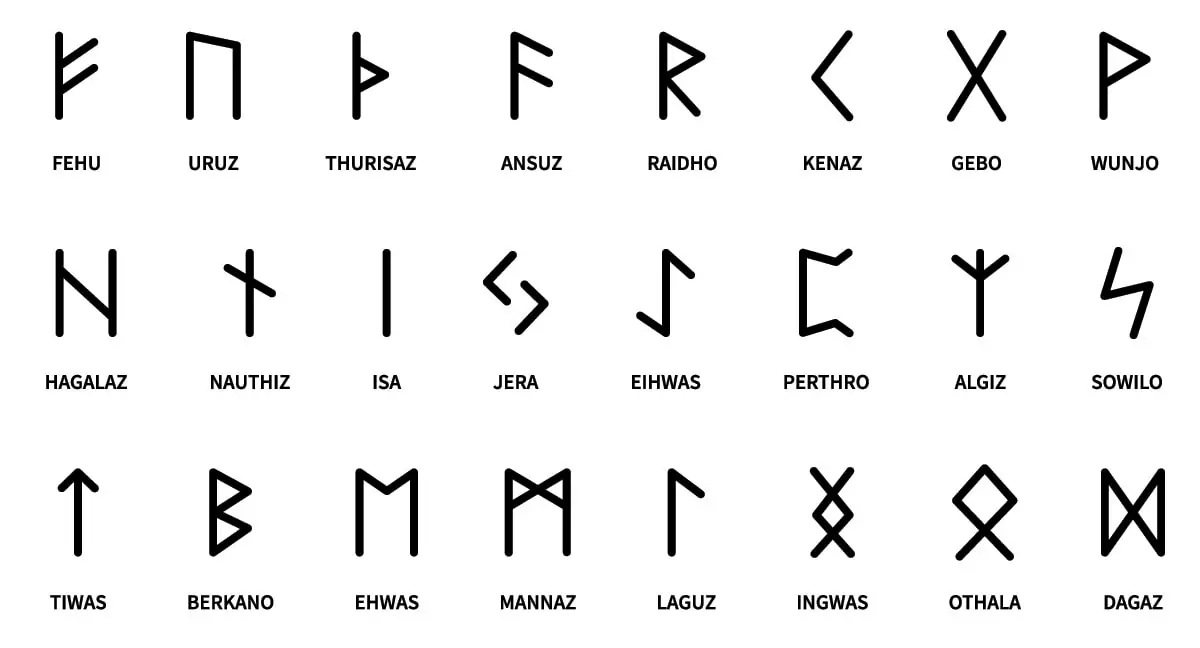
Rune Symbols and Meanings
Because of how long runes have been around, and with how many different languages used the runic alphabet, the exact meaning varies across the usage. Here’s a general guide on the runic alphabet, including what letter they translate to in the Latin alphabet (if they have one), the symbol, what it meant, and some of its qualities.
A (ᚨ) Ansuz
Symbol: God
Meaning: Odin, wisdom, truth, communication, inspiration, deity
B (ᛒ) Berkanan
Symbol: Birch
Meaning: birth, fertility, growth, new beginnings
C (ᚲ) Kaunan/Cen
Symbol: Torch
Meaning: revelation, creativity, fire, transformation, regeneration, illumination
D (ᛞ) Dagaz
Symbol: Day
Meaning: dawn, awakening, awareness, breakthrough, new enterprises
E (ᛖ) Ehwaz
Symbol: Horse
Meaning: fluidity, partnership, swiftness, trust, teamwork, harmonious relationships
F (ᚠ) Fehu
Symbol: Cattle/Wealth
Meaning: money, abundance, luck
G (ᚷ) Gebo
Symbol: Gift
Meaning: love, partnerships, generosity, exchanges, marriage
H (ᚺ) Hagalaz
Symbol: Hail/Precipitation
Meaning: radical change, loss, transformation, uncontrollable force of nature
I (ᛁ) Isa/Isaz
Symbol: Ice
Meaning: challenge, stillness, self-control, concentration
J (ᛃ) Jera
Symbol: Year/Harvest
Meaning: peace, rewards, prosperity, fruitfulness
K/O (ᚴ) Kaun
Meaning: Wound, transformation, regeneration, illumination, fire
L (ᛚ) Laguz
Symbol: Water
Meaning: flow, sea, renewal, dreams, fantasies, intuition, sensitivity
M (ᛗ) Mannaz
Symbol: Man
Meaning: friends, self, mankind, social order, intellect, mind, memory, learning
N (ᚾ) Naudiz
Symbol: Need
Meaning: necessity, hardship, endurance, survival, self-reliance
O (ᛟ) Othila/Opila/Opala
Symbol: Heritage/Possession
Meaning: ancestral, home, plenty, inheritance, legacy
P (ᛈ) Peorth/Perþ
Hearth, magic, mystery, secrets, divination, uncertain, hidden
R (ᚱ) Raido
Symbol: Ride/Journey
Meaning: wheel, movement, travel, destiny
S (ᛋ) Sowilo
Symbol: Sun
Meaning: health, energy, mastery, success, wholeness
T (ᛏ) Tiwaz
Symbol: God Tiwaz
Meaning: Victory, honour, justice, balance, leadership, authority
U/V (ᚢ) Uruz
Symbol: Aurochs (an extinct type of cattle)
Meaning: power, strength, courage, creative force, endurance
W (ᚹ) Wunjo
Symbol: Joy
Meaning: fellowship, hope, harmony, friendship, kinship, comfort
X/Z (ᛉ) Algiz
Symbols: Elk/Protection/Defence
Meaning: self-defense, divine protection, courage, valkyrie energy
Y/æ (ᛇ) Eihwaz
Symbol: Yew tree/Yggdrasil
Meaning: stability, reliability, strength, tree of life, eternity, resilience, longevity
TH/þ (ᚦ) Thuriaz/Purisaz
Symbol: Giant/Thord
Meaning: strength, defence, protection, conflict, change, catharsis
ŋ (ᛜ / ᛝ) Ingwaz
Symbol: God Ing
Meaning: unity, harmony, agreement
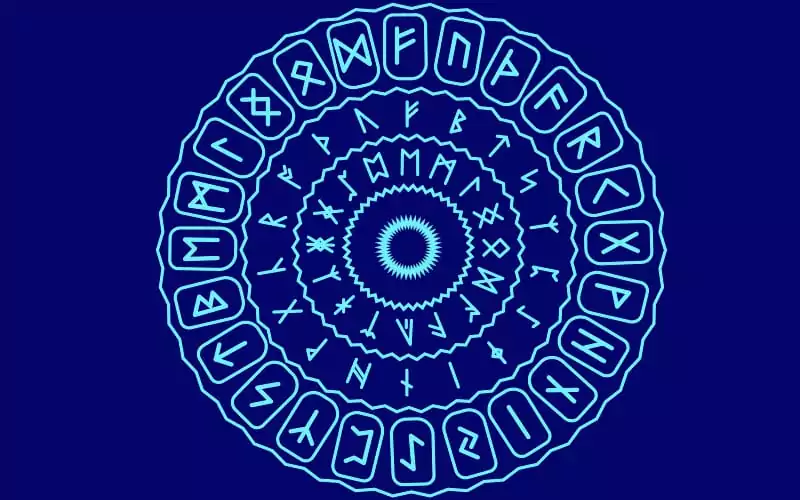
Viking Symbols and Meanings
Viking symbols hold rich meanings and cultural significance from the Viking Age. These ancient symbols, often depicted through intricate runic inscriptions, convey a diverse range of ideas, from bravery and protection to wisdom and prosperity.
The Viking symbols, deeply rooted in Norse mythology and belief systems, were not merely ornamental but played a vital role in communicating concepts and invoking divine powers. Today, these symbols continue to captivate people worldwide, inspiring jewelry, tattoos, and various forms of art as a tribute to the enduring legacy of the Vikings and their profound symbolism.
Apart from the runic alphabet, Viking culture had runes of their own that represented different objects and symbols. They were used for different reasons – for example, protection or guidance – and you could carve or mark them on different tools to access their power. For example, you could carve a symbol that corresponds with protection into your sword to give yourself strength and protection during battle.
Here are some of the most well-known Viking runes and their meanings.
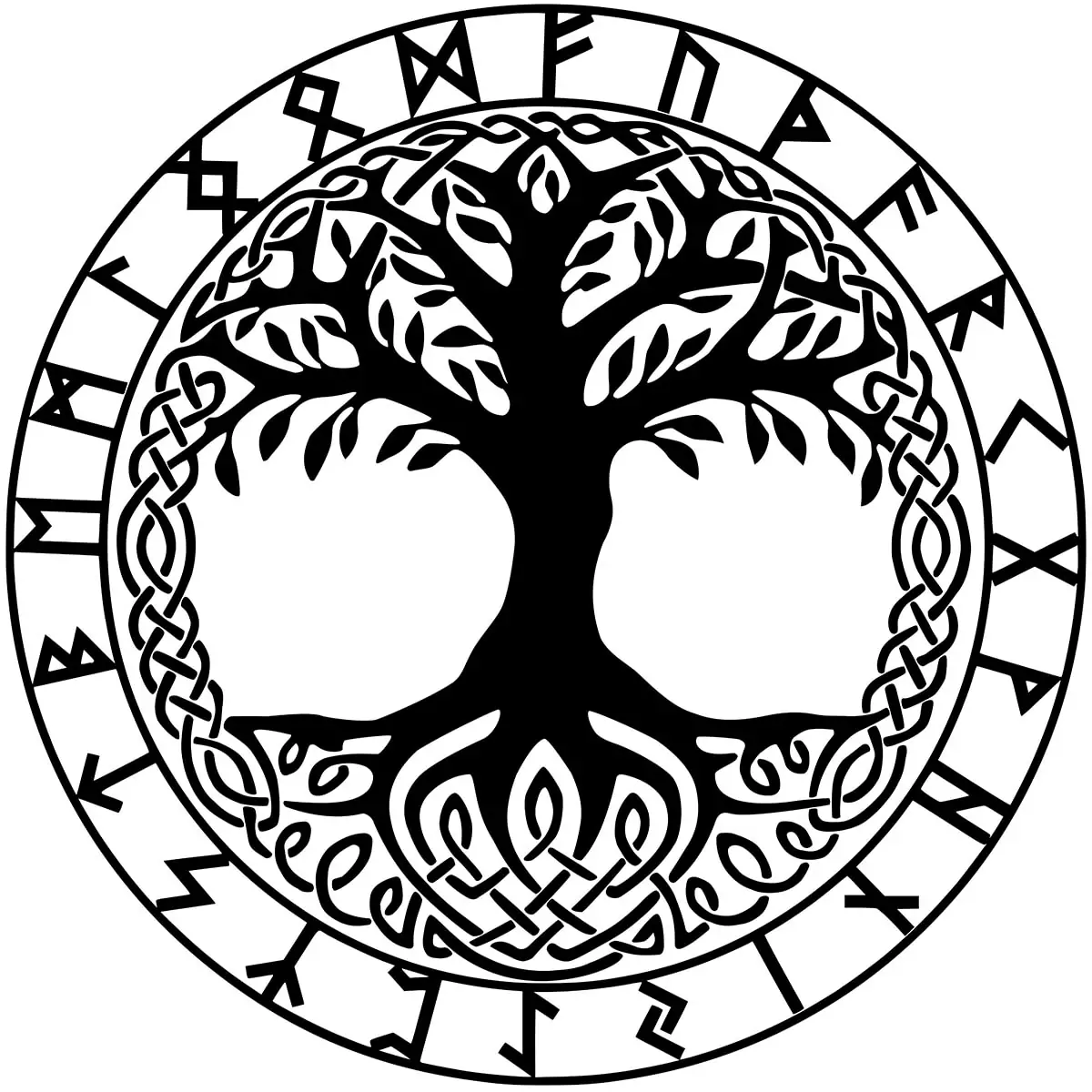
Yggdrasil
The world tree of life that Odin visited to access knowledge and truth is a rune itself. It’s considered one of the most powerful Viking runes, as it connects all things in life and death. It corresponds with the circle of life, and how life becomes death becomes life again in a never ending cycle.
Part of the final battle of Ragnarok includes the destruction of even the Yggdrasil tree. But in the true sense of the circle of life, the tree will grow again in the next world.
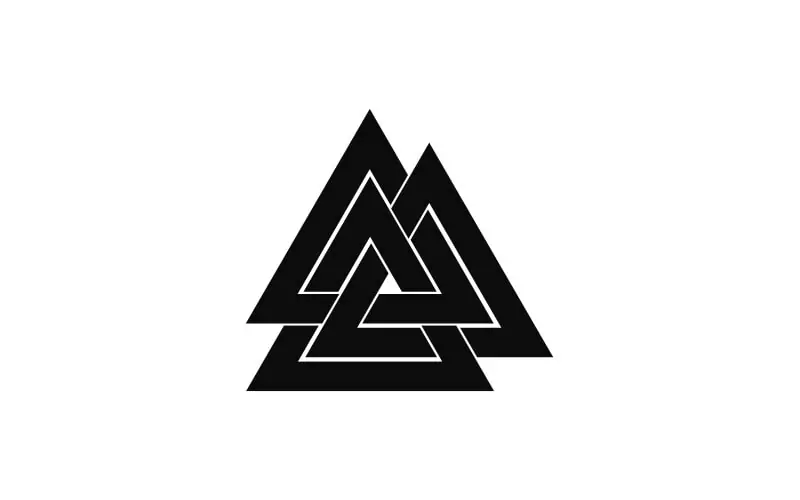
Odin’s Knot: Valknut
One of Odin’s responsibilities as a God is guiding dead souls into the land of the afterlife. As such, Odin’s Knot symbolizes a soul’s transition between life and death. This symbol is sometimes found on ancient urns beside horse and wolf figures. These animals are associated with Odin, and scholars inferred that this symbol meant protective passage to the dead into the next life.
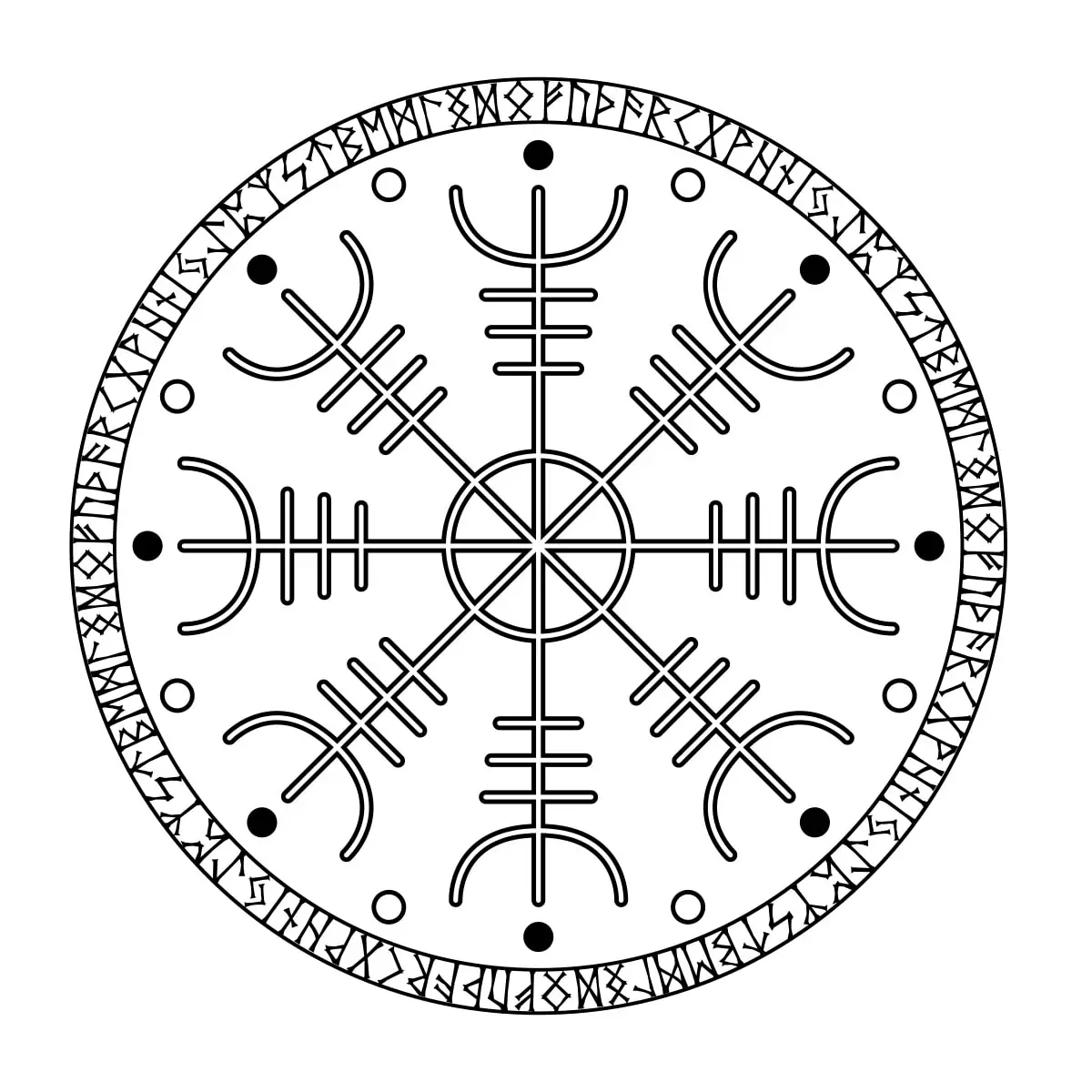
Helm of Awe: Aegishjalmur
Aegishjalmur is Aegir’s Helmet. As the Norse God of the sea, Aegir’s symbol is in the form of a circle with 8 tridents. It is said that whoever looked upon it became frozen by fear, making them easily conquered.
The number 8 holds significance; Odin possessed an 8-legged horse named Sleipnir. Associating the symbol with both Aegir and Odin makes the symbol even more powerful.
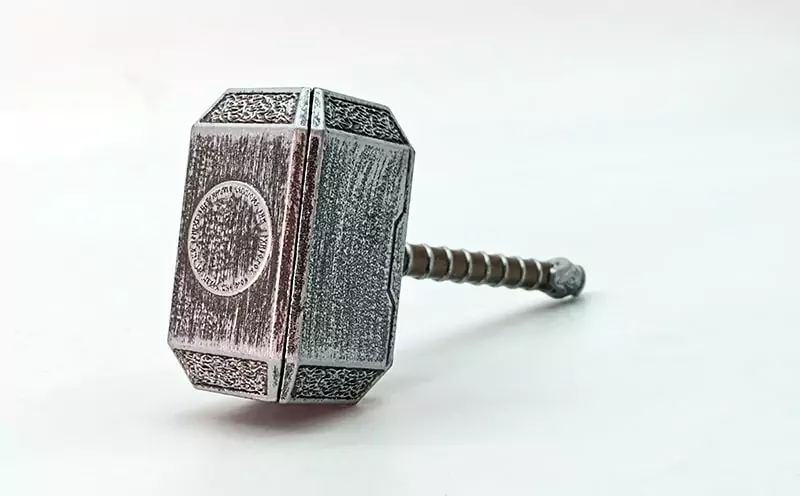
Mjolnir
Well-known among MCU fans, Mjolnir is the mighty Thor’s hammer. This magical hammer always returns to his hand in battle (and sometimes to Captain America, if you ask Marvel).
Not only did this symbol mean you had the protection of Thor, but it also correlated with fertility, growth, and positive fortune. While lots of imagery details Thor protecting Asgard from violent threats, the symbol was also used during wedding celebrations and the homes of married couples.
Many wore the symbol of Mjolnir as an amulet. Scandinavians would wear it instead of a cross to protest the expansion of Christianity.
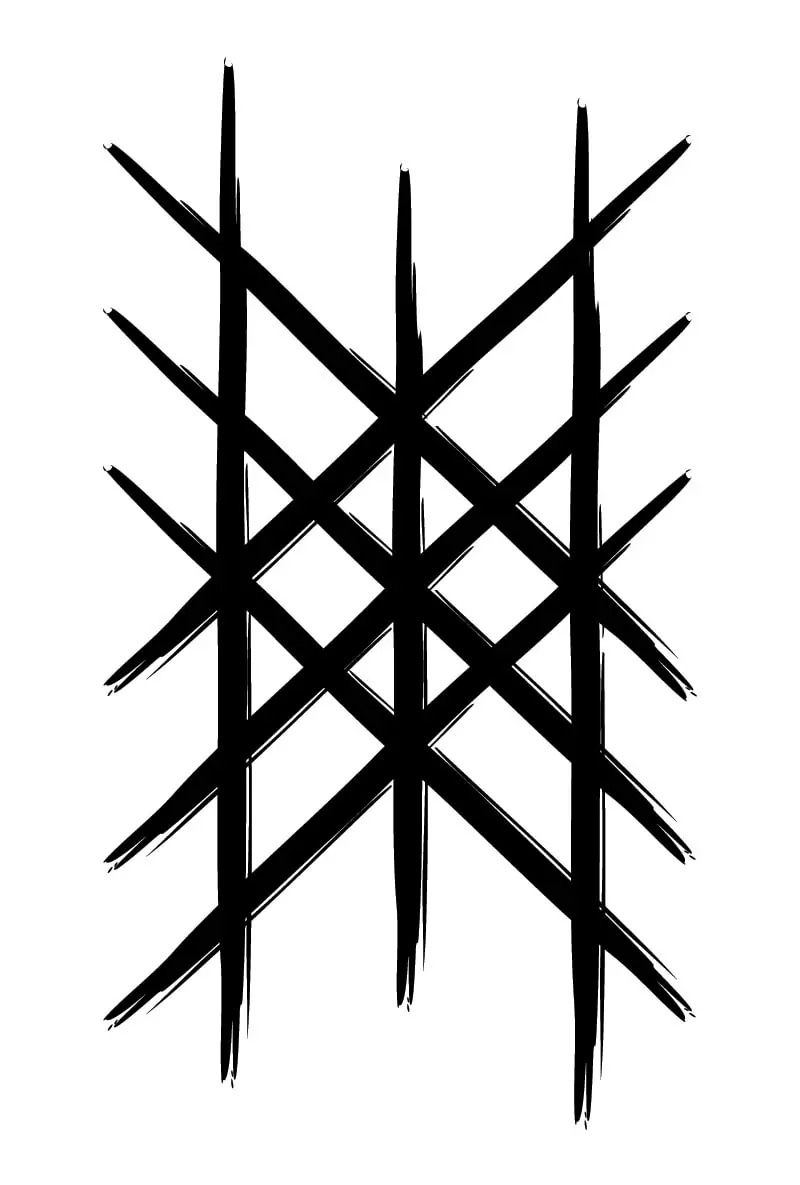
Web of Wyrd: Skuld’s Net
While it wasn’t one of the most popular Nordic runes and symbols, the Web of Wyrd symbolized an important concept. It represented the interconnected nature of the past, the present, and the future. According to legend, the Norns (the entities from the legend of Yggdrasil), wove the Web of Wyrd to shape the destiny of all living beings.
The nine staves featured in the rune symbolize the infinite possibilities that the past, present, and future bring.
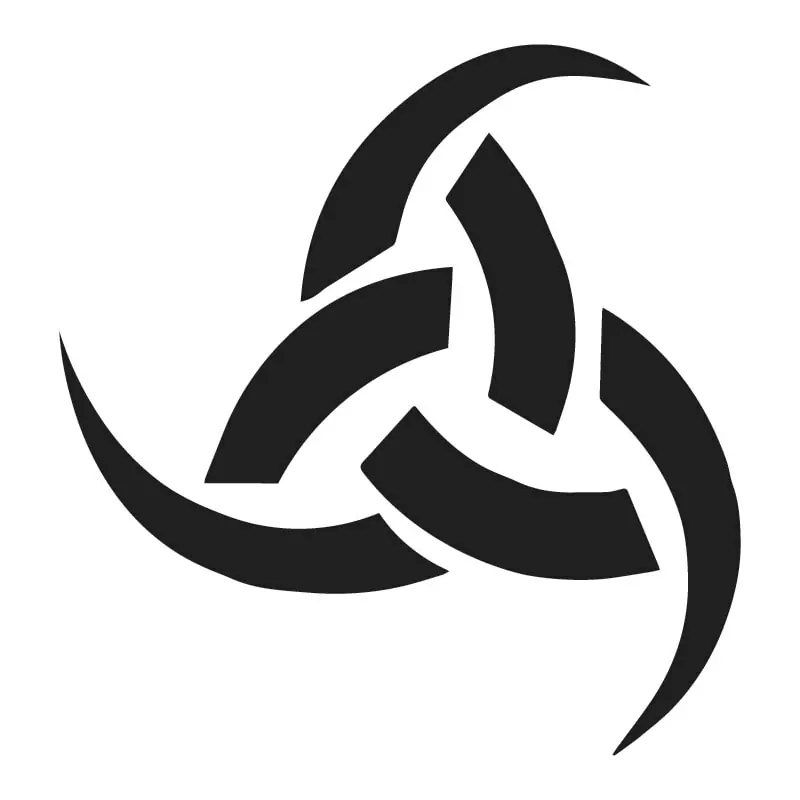
Triskelion: Horns of Odin
This image of three interlocking horns represented god Odin, his wisdom, and his poetic inspiration.
According to legend, there was a Mead of Poetry possessed by the giants. The elixir was brewed from the blood of the wisest man who ever lived: Kvasir. Odin stole it from these giants, brought it to the gods, and then bestowed it upon humanity. Drinking the elixir would give you great scholarship and the ability to compose incredible verse.
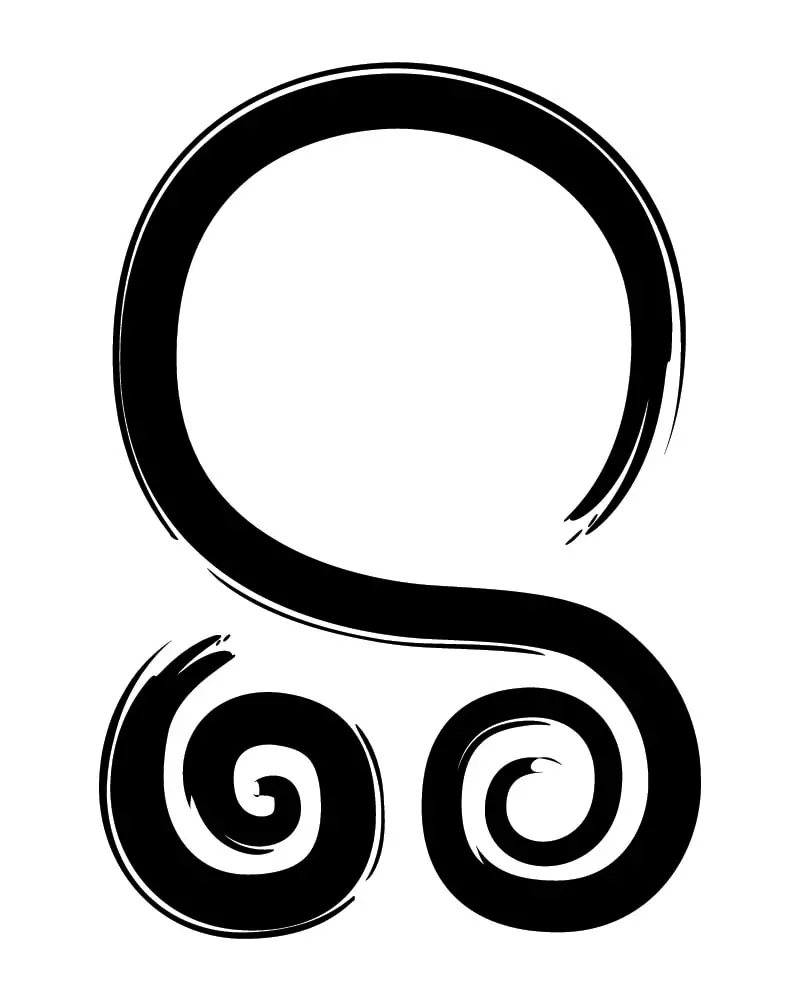
Elder Futhark Runes: The Troll Cross
The Troll Cross comes mostly from Swedish folklore. The shape of the Odal/Othala rune in the traditional Elder Futhark would offer a symbol of protection against dark magic and its harbingers. That included evil elves and devilish trolls. Wear this symbol on your person and you’ll gain protection against such magic.
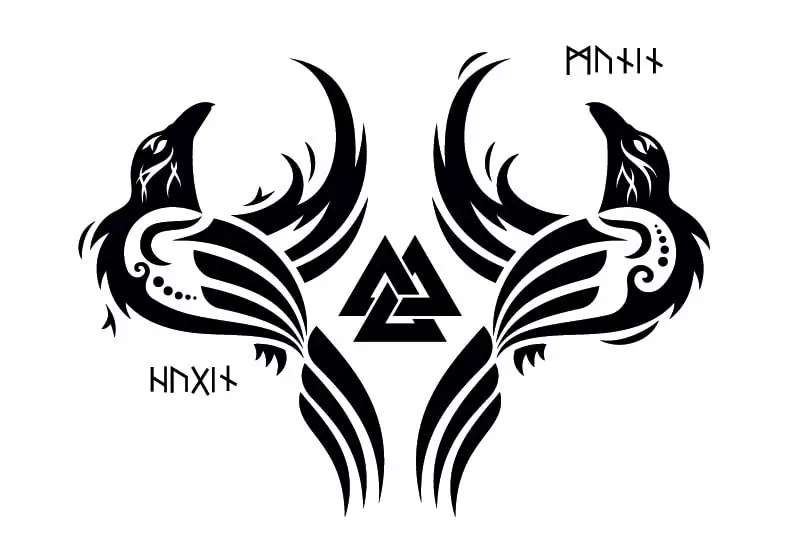
Huginn and Muninn: The Ravens of Odin
According to lore, Odin had a pair of ravens named Huginn and Muninn that acted as his messengers. You can find several pieces of artwork that feature the two ravens near him or on his shoulders.
These ravens flew throughout the land, observing all there was to see, and reported back to Odin at night. Some believe that Huginn and Muninn were representations of Odin himself. Instead of mythical birds, they were projections of his consciousness.
Famous vikings like Ragnar Lothbrok revered the raven. He used the symbol of the raven on his banner.
Viking heroes not only used them in symbols, but they used them in real life. According to the tale passed down for generations, Floki kept a raven on their viking ships to scout the area and fly towards land. That’s how they discovered Iceland.
Understanding Viking Runes and Their Significance
Fascinating artifacts left behind by Viking warriors and their Norse culture captivate both historians and fantasy enthusiasts alike. Delving into the world of Viking runes unveils the profound symbolism present in Norse mythology.
Which Viking rune do you find most intriguing? Additionally, which element of pop culture do you believe draws the most inspiration from Viking lore? Let us know in the comments!
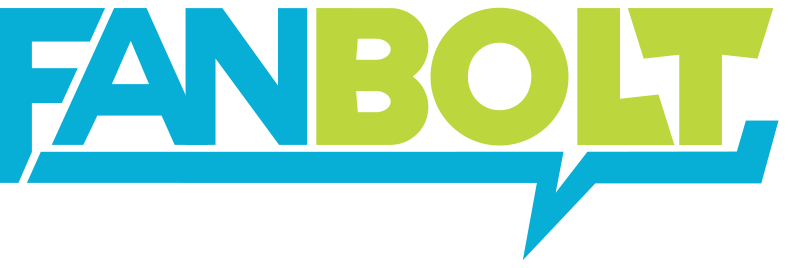

I really enjoyed reading this blog post about Viking runes! I learned a lot about the history and symbolism behind the runic alphabet. Thank you for sharing this information with us!
I really enjoyed reading this I’ve been studying the runes for about 2 years in language, divination, archaeology and whatever else i can find that’s interesting and this article peaked my interest
I am interested in seeing if i can have some symbols I discovered translated into English. Can you recommend a site such as that? I just have some photos of some images i believe to be runic. i am not sure if they are or not.
I don’t know of any sites that could help with that specifically. I’d recommend cropping the images down to just the symbols – and then uploading them to Google Image Search – and then see if gives you any links to sites that are using images with those specific symbols. I would start there and see if that helps – if not – maybe try reaching out to a museum that has a sizeable Viking collection and see if they could point you to someone. Hope that helps!